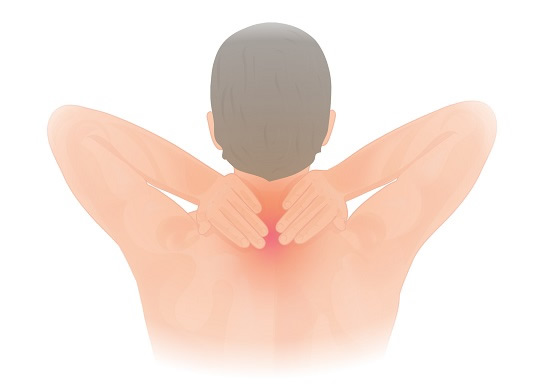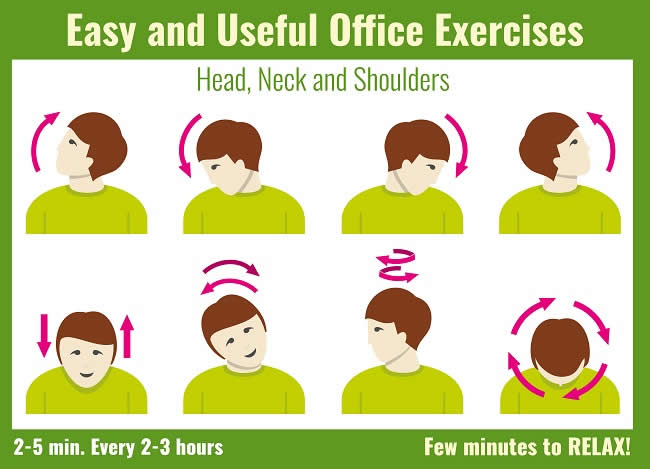Positive Health Online
Your Country

Neck Pain - What Causes It, How to Treat It, and How to Avoid Getting It
listed in back pain, originally published in issue 251 - January 2019
Almost 31 million days of work are lost each year due to neck, back and muscle problems, according to the Office for National Statistics (ONS). Neck pain is a modern day epidemic due in no small part to our love of technology. The sedentary postures people are adopting when using their mobile phones, tablets and laptops are putting excessive pressure on our necks.
Stand back and take a look at people on their mobile phones or iPads and you will see how hunched over they are. This forced position is putting a strain on the neck as it tries to support the weight of the head – the average adult head weights around 10Ibs.
Osteopaths are accustomed to treating people for back pain but the increasing problem with necks and neck pain means the problem is pretty much shared. 50/50.

Courtesy of InjuryMap - https://www.injurymap.com/free-human-anatomy-illustrations
This is especially worrying among young children who regularly play on their parent’s phones and tablets, as their bones have not yet fully formed. There is now a young generation growing up who by the time they move into adulthood will have formed permanent rounded shoulders and a concaved chest. For anyone with asthma this is particularly dangerous but generally it can also cause serious respiratory and breathing difficulties. Once the body has formed itself into that position it will be difficult for anyone to take in a normal amount of air into the lungs during each breath. Young bones, when allowed to fully grow into this malformed position will be there permanently - if the problem is not addressed early on it will be impossible to reverse.
The back is the foundation for the neck and when both are working optimally together they keep the head supported and facing forward. The whole structure of the body is organised in such a way as to distribute tension spatially and this is a structure that needs to be kept finely tuned.
What Other Problems Are Associated with Neck Pain?
GPs are seeing an increasing number of people complaining of migraines and headaches and without doubt, 80 per cent of these will be posture related. I see people every day on a cocktail of drugs prescribed to treat the symptoms rather than the cause. If the neck is not aligned with the spine it is going to cause pain and stiffness and that pressure in turn, will cause pain in the head. Pain is incredibly debilitating; once it is corrected all the stress just disappears from the face and it is possible for people to get their lives back again. It’s all about creating resilience to prevent a problem. Neurologists and GPs still haven’t caught up the what is happening to necks in the 21st century. They haven’t been trained about many of the underlying postural causes of neck pain and they are not necessarily making the connection between this and the increasing number of complaints about headaches that people are turning up at their surgeries with.

Caption: The exercises demonstrated in the image help to reduce tension in the muscles around the neck. By reducing tension, the muscles are able to efficiently perform their role of keeping the head in an upright position. Hold your head in each position for 10 seconds and repeat 3 times with 5 second rest between each exercise.
What Can be Done to Avoid It?
Stretches - Adults should factor in regular neck stretches into their daily routine. Anyone sitting over a desk at a computer can do some very simple exercises that will help keep the neck supple. Looking down or leaning over for long periods causes stiffness and will result in neck pain as the neck is having to work hard to support the head in that position;
See Image: Take a moment to look as far to the left as you can, turning your head that way, hold, then tilt the head up, hold, tilt the head down, now repeat on the right. Looking forward drop your chin down, hold, now look up lifting your chin, hold, turn to the left then to the right back and forth slowly, drop your right ear towards your right shoulder, hold, repeat on the left, then turn to the right and hold, look up, hold, look down, hold, finally tip your head forward and then look left, then right, pausing in between. The entire sequence should take about two to five minutes and should be done every two to three hours;
Tech break- Parents need to be aware when their children are sitting for prolonged periods. They should make sure they are not slouched and put a time limit on technology otherwise they are storing up long-term pain;
Pilates and Yoga – Both excellent for helping to improve posture by keeping the joints supple and the surrounding muscles strong and supportive of the head;
Osteopathy - Regular visits to the osteopath will keep things on track. Sometimes we have to accept there are some things we can’t do for ourselves and an osteopath can see problems that might be starting to arise. It only takes one wrong move if your neck is not in a good state – and with no warning you can find the nerves have been pinched and that you are in extreme pain;
Hydration - Definitely something to consider. It is not commonly known that dehydration affects the neck muscles but if these are not hydrated they can feel heavy and lead-like;
Pillows - There is a very fine line between too many pillows and too few that offer a shallow support allowing the neck to start sinking at an angle. Orthopaedic pillows are normally the best because they are shaped according to the contour of the neck;
Stress - It is hard to say to someone ‘take the stress out of your life’ but stress is one of the biggest contributing factors in neck pain. When we are stressed our natural go-to position is to mildly tense the shoulders sub-consciously without us thinking about it. When people are stressed they also often find themselves grinding their teeth and clenching their jaw and this also causes neck pain;
Exercise – being active, light exercise and breathing exercises while keeping an eye on your work/life balance will all help;
Heat - Neck pain is extremely debilitating, especially if there is no obvious reason for what is causing it. If there really is no hope of getting to an osteopath and the pain has already taken hold, try heating up a wheat pack and placing it around the neck. When the muscles have warmed up, and only then, try to perform a few gentle stretches. But never try that when the neck is cold or stiff when you first wake up as you could do even more damage.
By being mindful of the causes of neck pain, doing your best to avoid them and regularly stretching the neck muscles – you should be able to avoid neck pain and its associated issues. If you are unfortunate enough to be suffering, then get help, even if it’s DIY help at first – as soon as you can. There is no need to keep suffering – there are plenty of gentle ways to treat a painful neck.
Comments:
-
No Article Comments available